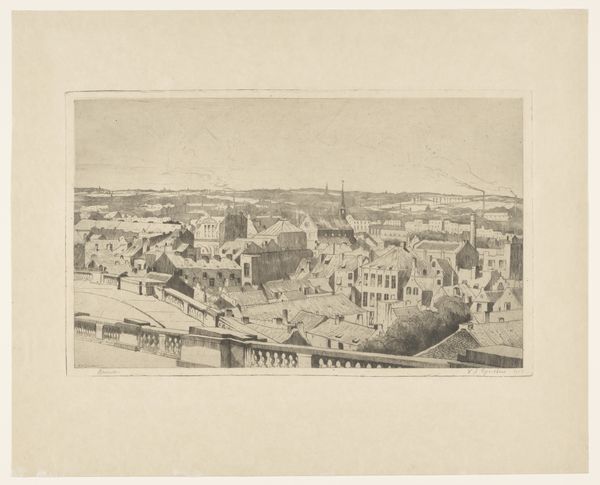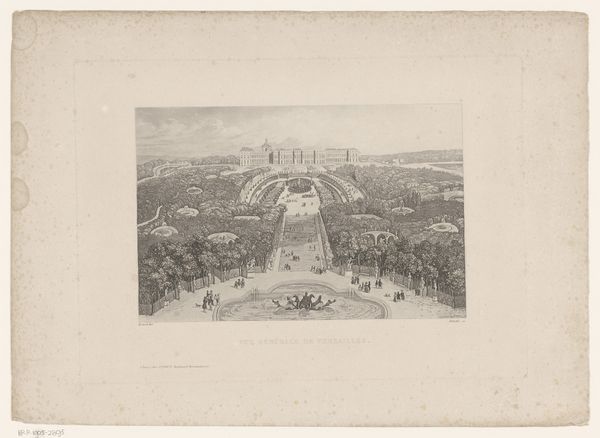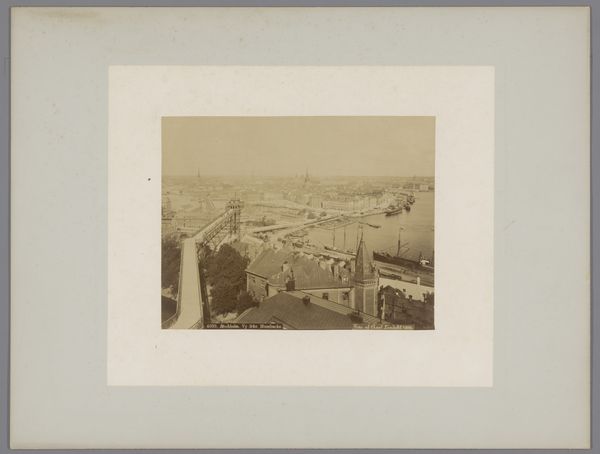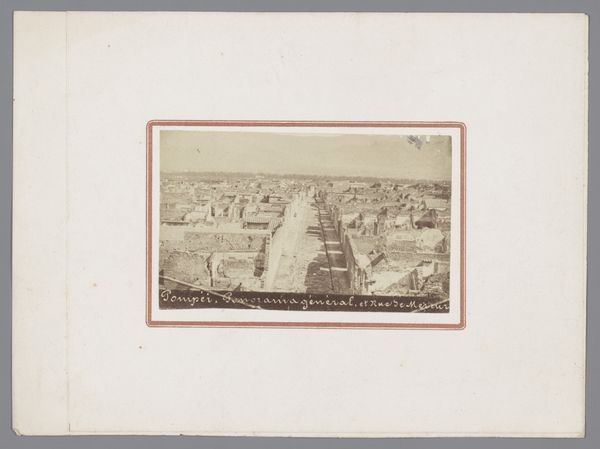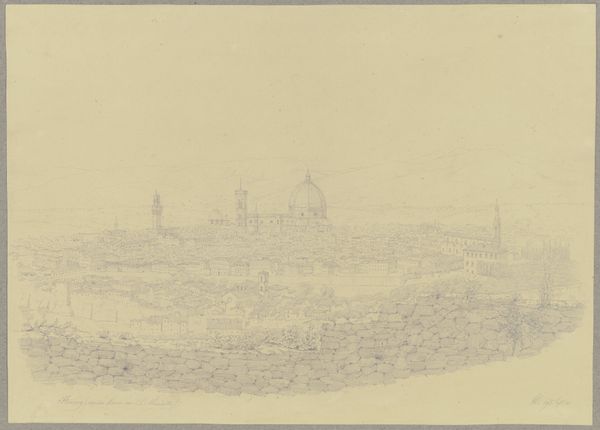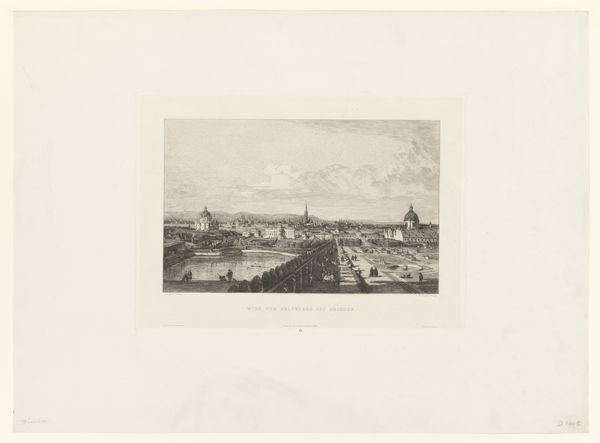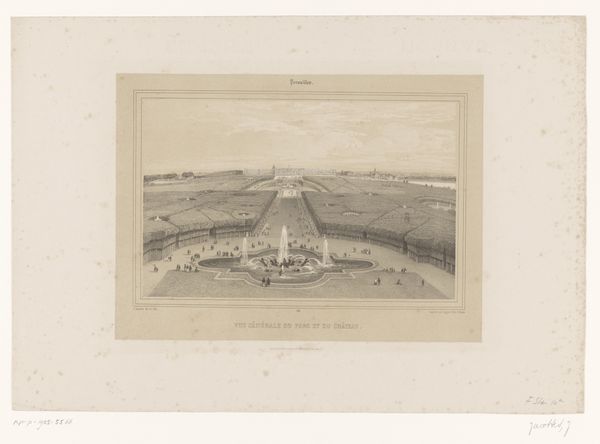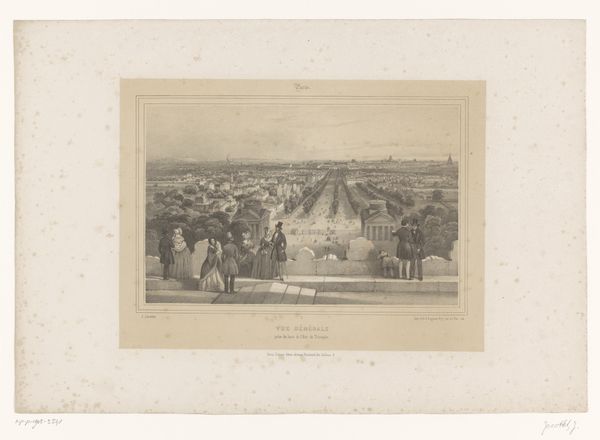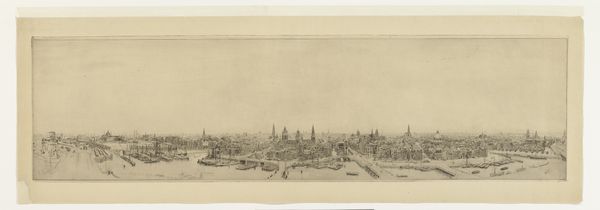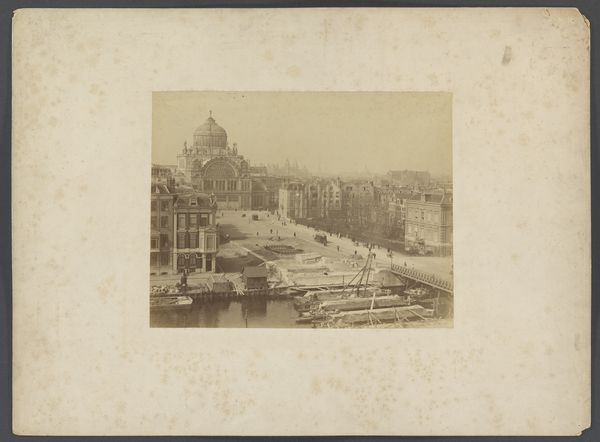
View of the remains of Pompeii with the Strait of Mercury in the middle 1860
0:00
0:00
robertorive
Rijksmuseum, Amsterdam, Netherlands
print, photography, gelatin-silver-print
# print
#
landscape
#
photography
#
ancient-mediterranean
#
gelatin-silver-print
#
cityscape
#
history-painting
#
realism
Copyright: Public domain
Curator: Up next, we have Roberto Rive's "View of the remains of Pompeii with the Strait of Mercury in the middle," a gelatin silver print dating back to 1860, currently held at the Rijksmuseum. Editor: My first impression? An unnerving stillness. Despite the city's ruin, the composition—particularly that strong central perspective—evokes a disturbing sense of order. Curator: Disturbing precisely because of what is absent. Rive's choice of photography, and gelatin silver print in particular, documents not only the scene but the very process of archaeological discovery as it unfolded. It turns the remnants of an advanced society into a site of intense visual scrutiny. The act of photographic reproduction turns people and production to history as object and data. Editor: I agree, the realism here is stark, almost hyperreal in its detail, making us witnesses to devastation and history at once. Look at how the light plays on the ruined structures, how each brick and stone is meticulously rendered. This precise rendering invites us to analyze the spatial relationships. How do the surviving walls interact? How is the road structured? What is this telling us about space and depth? Curator: Right. And don’t forget the social aspect. Photographs such as these, became highly sought-after collectables, commodifying both the tragic history of Pompeii and the labor involved in its excavation. Consider the sheer amount of material moved. These photos fed the rising market of tourism, allowing mass audiences the thrill of archaeological exploration. Editor: True, but that commodification in turn heightens the visual drama. Note the tones, how Rive manipulated the contrast between light and shadow to guide the viewer’s eye and create a powerful narrative about lost grandeur, forcing us to visually rebuild the composition within our own mind, an uncanny resurrection! Curator: The materials themselves—the chemical processes needed to produce this print, were very costly at the time. Photography such as this wasn’t democratized in its earliest form; images such as this remained firmly within reach only by the elite, those invested and interested in its cultural, economic, and social capital. Editor: Interesting point! For me, personally, this photo demonstrates how the aesthetic and technical features coalesce into a chilling historical document. It moves past just presenting a ruin; instead, it invites active engagement, prompting us to reflect on history, loss, and human nature in relation to time itself. Curator: I agree! Viewing history not as some linear concept but rather as product, and then re-evaluating from this paradigm, is critical.
Comments
No comments
Be the first to comment and join the conversation on the ultimate creative platform.

